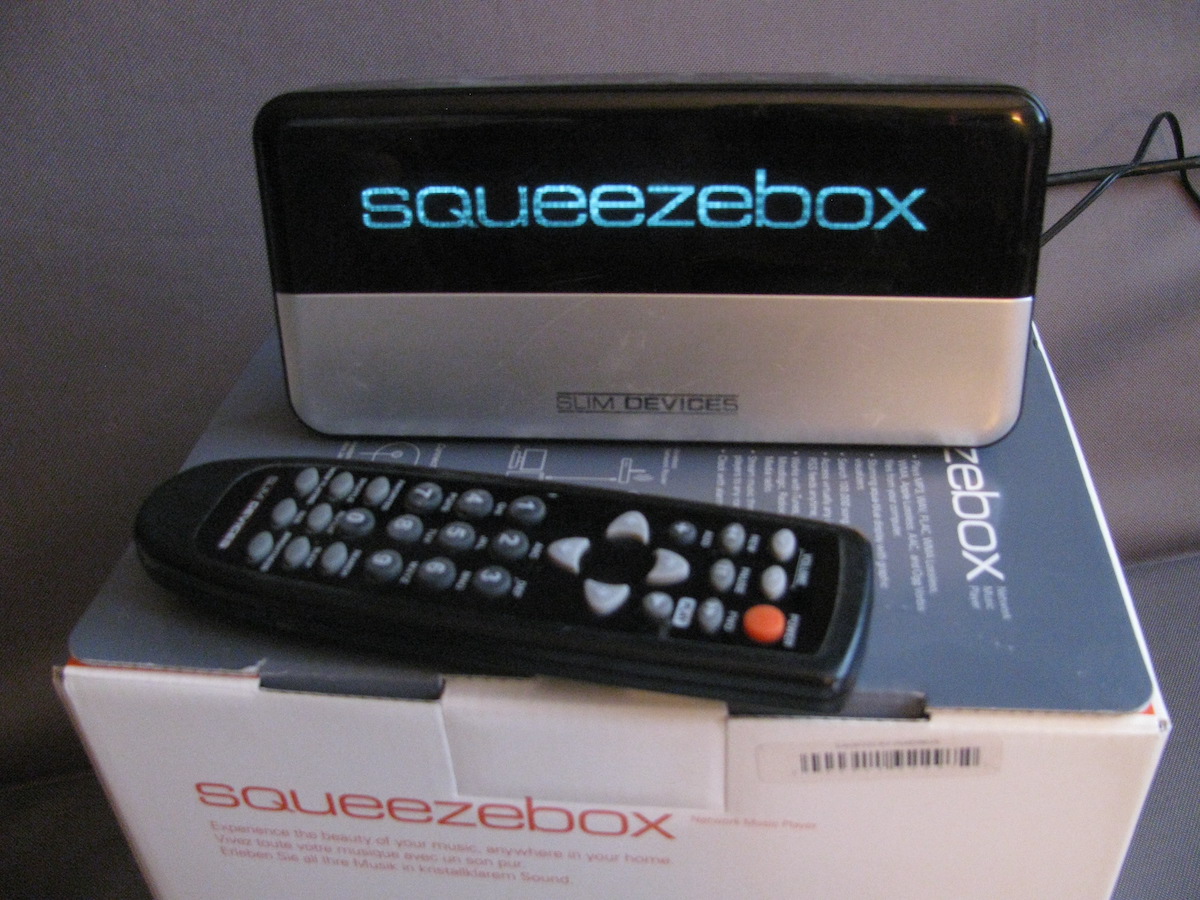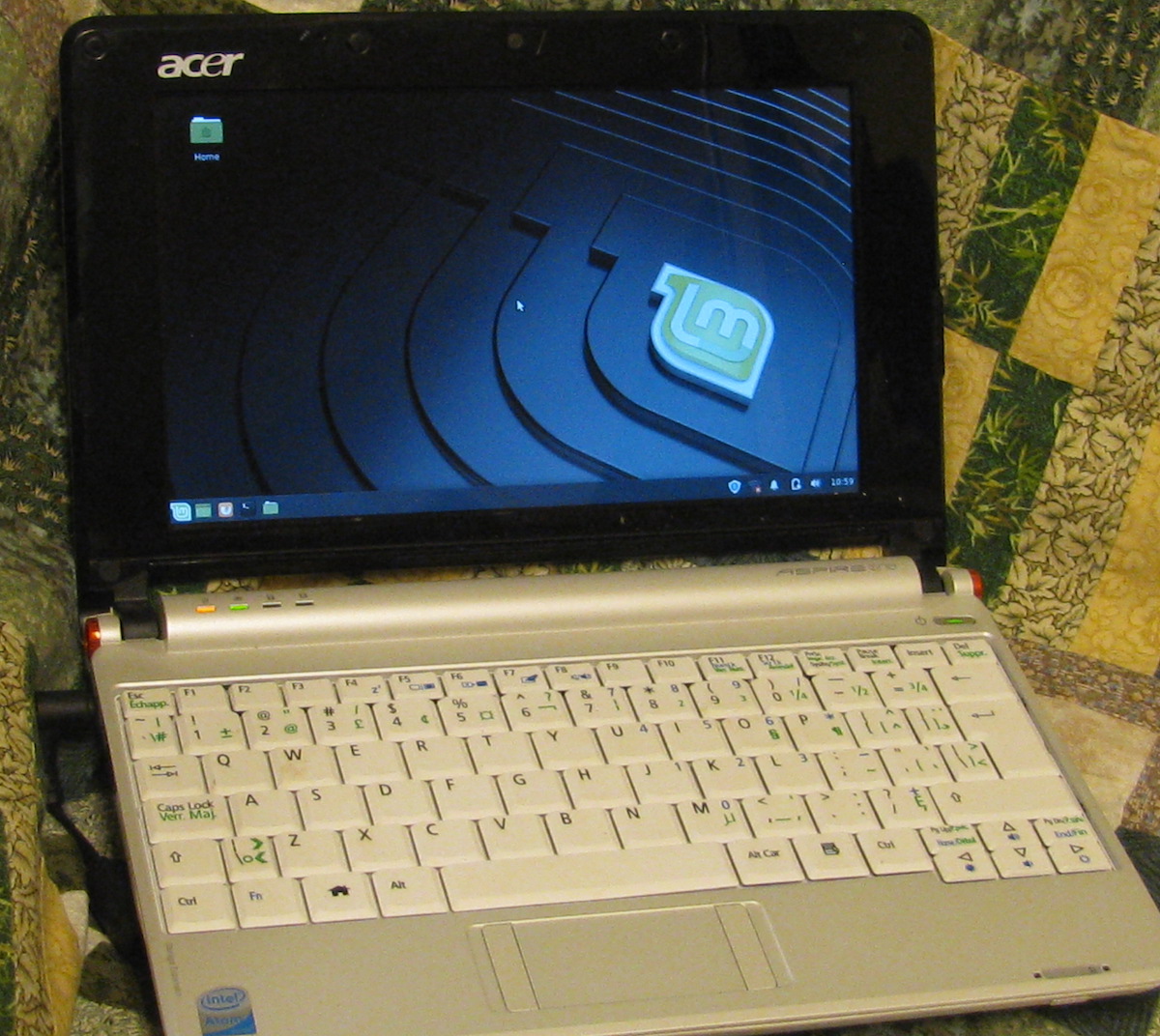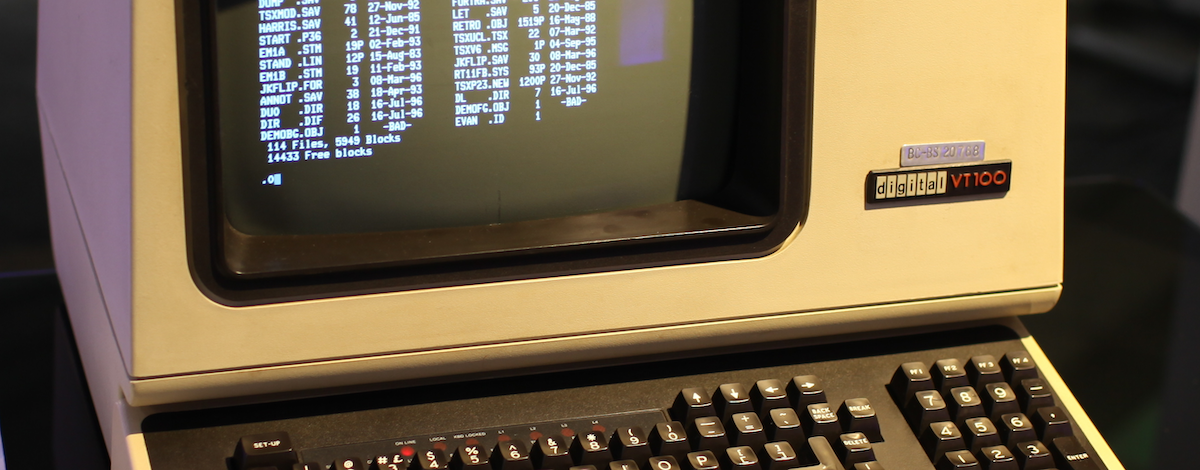I’m a terrible digital hoarder. I have email archives that reach back years. I have multiple copies of my digital photos. I even have at least partial copies of old machine installs going back years. Heck, it’s just bits and storage is cheap.
This translates a little bit into the physical world, but at least for this post I’ll focus on cool technology that I’ve bought and just can’t let go.
First up is the SLIM Devices Squeezebox. At the time this was a ~$400 device, and while I’d already digitized a lot of our music from CD to MP3 this opened up a novel way to explore our music collection.
The remote was useful, but where things really got neat was the web browser interface to the music server where you could queue up songs as you ‘discovered’ them. This was a neat audiophile device supporting digital out so you could connect this into your HiFi gear. There was even FLAC support if you wanted to go that path.

Sadly, two things made this device fail.
- The company was acquired by Logitech and there were multiple reshuffles of the software / ecosystem. Newer devices came out, and the legacy stuff was left in the dust.
- Streaming services became the new way to listen to music. The apps got really good and the friction between you and the music you wanted to hear was removed. Owning your music became less important to consuming music.
I can imagine a few futures where a device like this would survive if it had something like Plex supporting it. Today I still have my digital music collection, but it’s served up by Plex and we use the various Plex apps and supported devices to listen to it – including an Ikea Sonos speaker.
The second device is the Acer AspireOne. This was also around ~$400 when it came out, which was a ground breaking price point for a laptop. Sure this was a tiny 8.9″ screen, but it had everything we’ve come to assume a Chromebook can do. It was branded a Netbook, a category that died when Chromebooks came out.

For a while, this was used as Jenn’s primary device. It had access to email, could surf the web and even had a webcam and mic for recording video. (this was before we had ubiquitous video meeting software). It even supported local document editing via early versions of what we know as LibreOffice now.
It was replaced with a mac mini ages ago, which in turn was replaced.. I kept this little laptop around. The original software was a special Linux build that was really pretty horrible, but as this was just a standard intel based machine it would accept a lot of the usual Linux distros.
At one point I even managed to squeeze neverware onto this to make it into a very low end Chromebook. It worked, but was barely capable of doing some of the heavier web workloads that are pervasive on the modern web.
My primary use for this was a hackable Linux laptop that would let me do stuff like reconfigure routers. It’s built in ethernet jack was great for this and meant that I didn’t have to crawl behind my desktop machine to mess with the network. Sadly the battery on this gave up and it needs to be wall powered, limiting it’s usefulness in terms of portability.
I’ll miss having it, but I’ve since gotten my hands on a 14″ HP Chromebook that I unlocked and installed Linux on, specifically GalluimOS. This has become my go-to portable Linux hack machine. The battery on this isn’t great, but it’ll still run an hour or so. Plenty of time for my needs.
Well, farewell to these devices. I’m glad that they didn’t hit the landfill as I was able to sell them on Kijiji for a couple of bucks. The squeezebox went for $20, very quickly I’ll add. The netbook for $10, which for a working laptop is some unbelievable price apparently. While that is horrible depreciation, at least someone is going to use them for something which has value to me.


